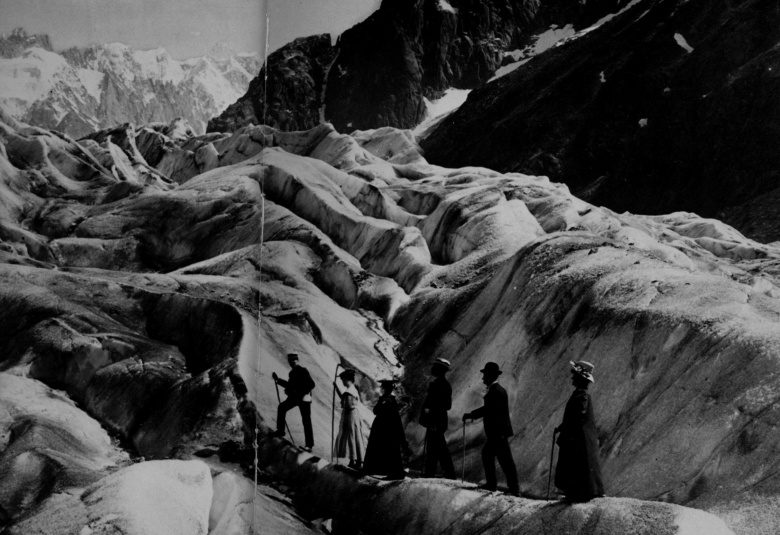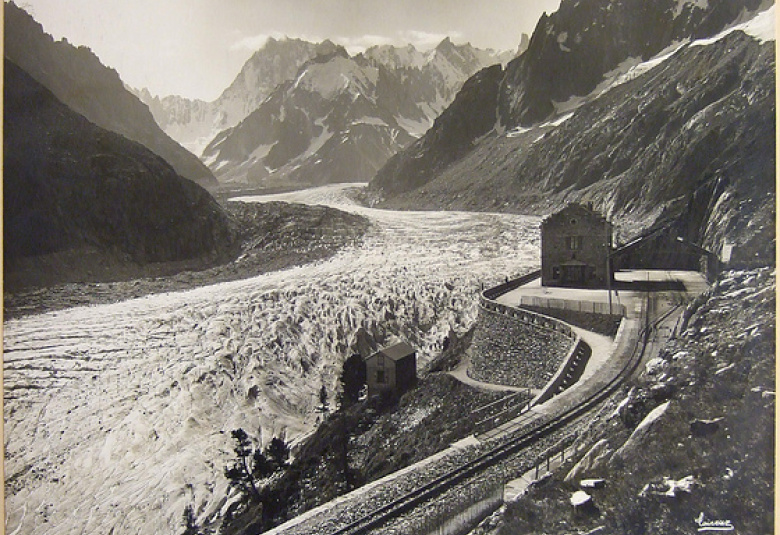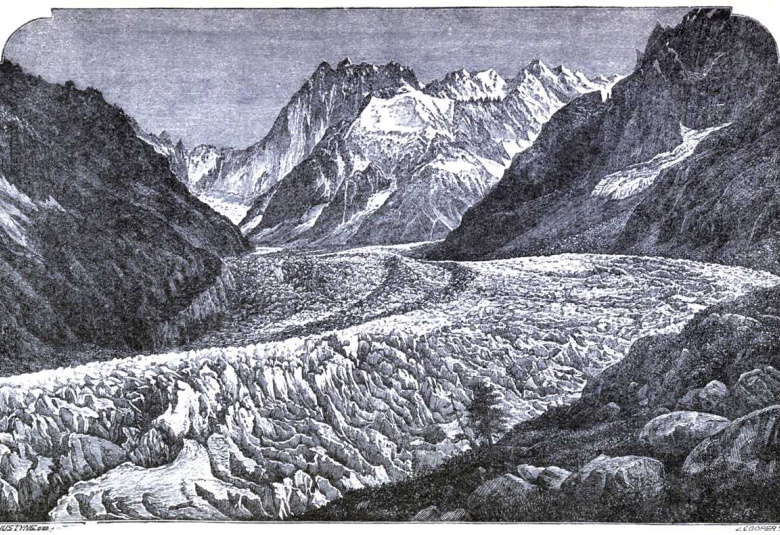Glaciers form through repeated freezing and thawing of snow layers. Settled snow undergoes structural changes, which increase its density. This compaction results in a completely bonded zone of rigid ice. This layer is subject to fracturing and cracking, forming crevasses as the glacial mass slowly moves downhill.
Immense internal pressure raises the ice's melting point and the resultant meltwater acts as a lubricant. Most glacial movement is due to the ice's own plasticity. Ice crystals deformed by the huge weight above, slide over each other, much as discs of shiny plastic would.
Glaciers form above the permanent snow line and become elongated channels of ice terminating in a snout well below the snow line. That they "flow" was noticed by accident when articles, even human bodies, lost high on glaciers reappeared decades later downstream.
As a glacier moves forward it will eventually point downhill in a U-shaped arc. Longitudinal stripes and V-shaped chevrons of rock debris on a glacier's surface relate to summer rockfalls and erosion cycles, winter rockfalls are less frequent and become snow covered.
Crevasses or tension cracks, occur where the glacier passes over irregularities in the valley floor, and are mostly crescent shaped. Where they intersect, "seracs" are formed (ice pinnacles.) Sometimes the underlying rock is so steep that seracs and ice cliffs tumble on the verge of avalanche. This is a dangerous zone for humans to penetrate.
Rock peaks high enough to protrude through the glacier surface appear as dark islands and are technically known as "nunataks" an Inuit term. In the French Alps they are referred to as "rognons".
A glacier's upper limit is called a Bergschrund or Rimaye. This is a gap where freeze thaw cycles have pulled the ice away from the mountain headwall.
Glaciers are great movers of earth and rock, polishing and trimming the static rock surface with suspended rocks and stones, as they move slowly forward.
Where a glacier has melted completely, the birthplace will be marked by a cirque (Cwm in Wales, Corrie in Scotland) which is frequently occupied by a small round lake.










